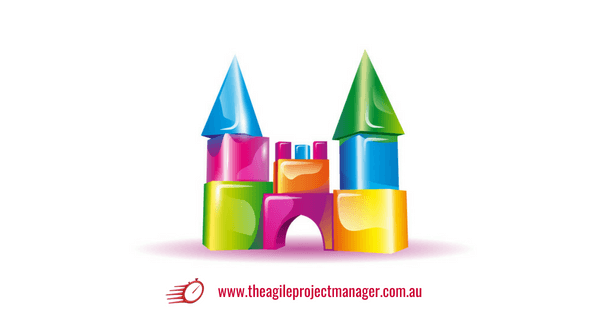
Collaborate to Create (Hint: Don’t Criticise)
As leaders in an increasingly Agile world, it is crucial for us to develop a culture where building on ideas and acknowledging contributions is not just reserved for collaboration sessions. It is about living that culture all the time, and supporting each other to continuously improve. One of the greatest challenges I see when I’m working with teams, is creating an environment where members feel they can collaborate effectively without fear of criticism.
At a workshop I attended recently with Kimberley Wiefling of Silicon Valley fame, we were given an exercise to do. The purpose, which was very clearly stated, was to give each participant an experience of being acknowledged and creative without being criticised.
How to Build Jello Houses
There were 9 make believe topic options, and, feeling a mite peckish at the time, I selected the abstract “Jello Houses”. The premise of the exercise is that for your chosen abstract, you are the absolute expert, and your partner’s role is to collaborate by receiving and listening without criticism. This meant making encouraging noises, nodding, and generally being engaged.
Now the girl I was partnered with wasn’t super keen on the whole interactive thing. I don’t know if she didn’t hear the instructions? Didn’t understand them? Was insufficiently caffeinated? Maybe she was a tad less hungry than I, but let’s be honest, it seemed to me that she really just wanted to be a bum on a seat.
As the expert on Jello Houses, and a seasoned veteran when it comes to highly fantastical conversation, I started off by saying “I have been in the Jello house industry for over 10 years, and business is booming!” I was barely getting into character when my partner interjected to ‘clarify’: “what weather does that work in?”, “how is it possible that they are sustainable?”, “does peanut butter REALLY work to replace mortar?” You know, she kind of did the opposite of what we were asked to do. “Thank you!” I said in my head, “for the opportunity to see the contrast of how this is supposed to work and therefore find clarity in how it could be instead!” Or perhaps it was: “Thank you! I’m already thinking about the blog post I can write about this!”
No. Wait. What’s the other thing? Oh right, I noticed how completely she had missed the point and done the opposite. Did she mis-hear or did she respond to this situation the way she responds to every new idea? I’m hoping she mis-heard… But it led me to thinking how invested we can be in the identities and roles we play at work and in life.
Are you a criticiser?
Agile as a way of working is becoming more prolific in our work places and in turn we are being asked to work together to solve problems that are growing in complexity. To do this, we must learn to collaborate as Creators, and not as Criticisers. There is very little value a Critic can bring to a creative, collaborative discussion.
In design thinking we talk about divergent vs convergent thinking. Divergent thinking is all about generating lots of ideas, where anything is possible, we are building and creating in a magical and imaginative way. It is equally as important to know when you have built the idea enough so that you can start thinking about it from an implementation perspective. This is where you can segue into convergent thinking, pick one idea and develop a framework. This is the time to get more robust about logistics, implementation and practicalities, and change the interaction to the style of my former Jello House Hater (as she will be forever known). The heart of the matter is, those who fall into patterns of criticising, are suppressing creativity and innovation in their presence
The litmus test for a Criticiser is to check how quickly you go to logistics, risks, and mismatches before you spend time in the realms of possibilities. When an idea is so new that you are still talking about possibilities, the question you need to ask yourself is; have you been invited to collaborate and contribute to build and / or give feedback?
How to collaborate as a Creator
Becoming a Creator means getting in the habit of saying “yes!” even when it’s uncomfortable. Especially when it’s uncomfortable. It is the intrinsic understanding that small ideas, and silly ideas, create a spark that leads to other bigger ideas, and from there we can build. There are so many examples (here, here, here, and here) of ideas that were ridiculous to start with and were parked, that have changed the way we live for the better; where a crazy idea becomes genius.
Being a Creator starts by having a heightened awareness of the language you use, framing your thoughts in terms of:
- how might we?
- what is possible?
- What else is possible?
- what could we do to overcome this?
Using the language of possibility allows others to build and collaborate in your presence. Once you put “how might we…“ in front of something, then it completely changes the conversation.
Here’s a quick test – check your most recent social media interaction: did you comment and add to the conversation? Or did you criticise (otherwise known as “critique”) what someone else posted or said? You know what they say; “those who live in Jello Houses, shouldn’t make bones”. Or something like that anyway, I’m just playing with ideas.
I would love to know – how do you build a creative work environment? How do you deal with the well-meaning criticisers? Head on over the Facebook page and join the conversation!

